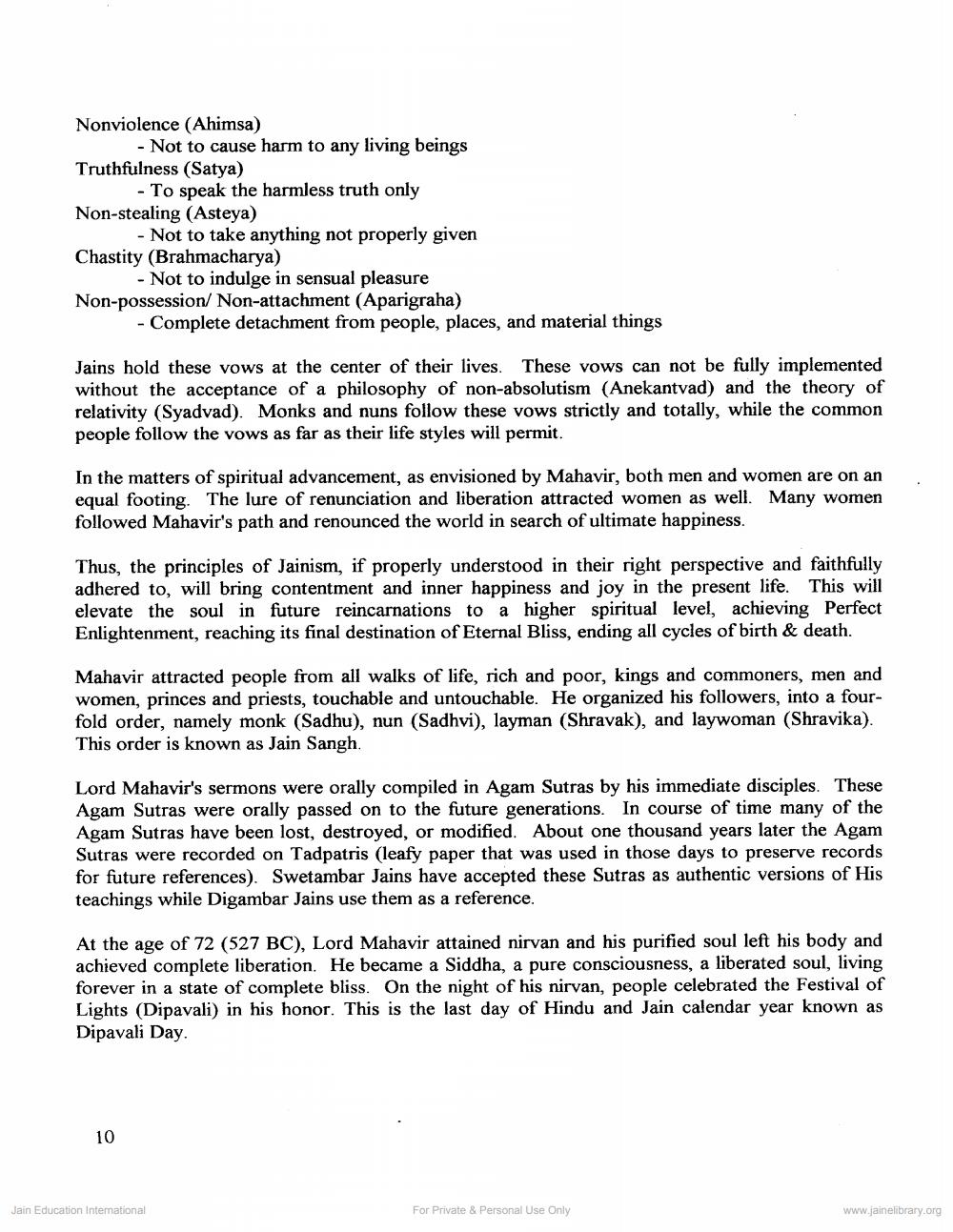________________
Nonviolence (Ahimsa)
- Not to cause harm to any living beings Truthfulness (Satya)
- To speak the harmless truth only Non-stealing (Asteya)
- Not to take anything not properly given Chastity (Brahmacharya)
- Not to indulge in sensual pleasure Non-possession/Non-attachment (Aparigraha)
- Complete detachment from people, places, and material things
Jains hold these vows at the center of their lives. These vows can not be fully implemented without the acceptance of a philosophy of non-absolutism (Anekantvad) and the theory of relativity (Syadvad). Monks and nuns follow these vows strictly and totally, while the common people follow the vows as far as their life styles will permit.
In the matters of spiritual advancement, as envisioned by Mahavir, both men and women are on an equal footing. The lure of renunciation and liberation attracted women as well. Many women followed Mahavir's path and renounced the world in search of ultimate happiness.
Thus, the principles of Jainism, if properly understood in their right perspective and faithfully adhered to, will bring contentment and inner happiness and joy in the present life. This will elevate the soul in future reincarnations to a higher spiritual level, achieving Perfect Enlightenment, reaching its final destination of Eternal Bliss, ending all cycles of birth & death.
Mahavir attracted people from all walks of life, rich and poor, kings and commoners, men and women, princes and priests, touchable and untouchable. He organized his followers, into a fourfold order, namely monk (Sadhu), nun (Sadhvi), layman (Shravak), and laywoman (Shravika). This order is known as Jain Sangh.
Lord Mahavir's sermons were orally compiled in Agam Sutras by his immediate disciples. These Agam Sutras were orally passed on to the future generations. In course of time many of the Agam Sutras have been lost, destroyed, or modified. About one thousand years later the Agam Sutras were recorded on Tadpatris (leafy paper that was used in those days to preserve records for future references). Swetambar Jains have accepted these Sutras as authentic versions of His teachings while Digambar Jains use them as a reference.
At the age of 72 (527 BC), Lord Mahavir attained nirvan and his purified soul left his body and achieved complete liberation. He became a Siddha, a pure consciousness, a liberated soul, living forever in a state of complete bliss. On the night of his nirvan, people celebrated the Festival of Lights (Dipavali) in his honor. This is the last day of Hindu and Jain calendar year known as Dipavali Day
Jain Education International
For Private & Personal Use Only
www.jainelibrary.org




